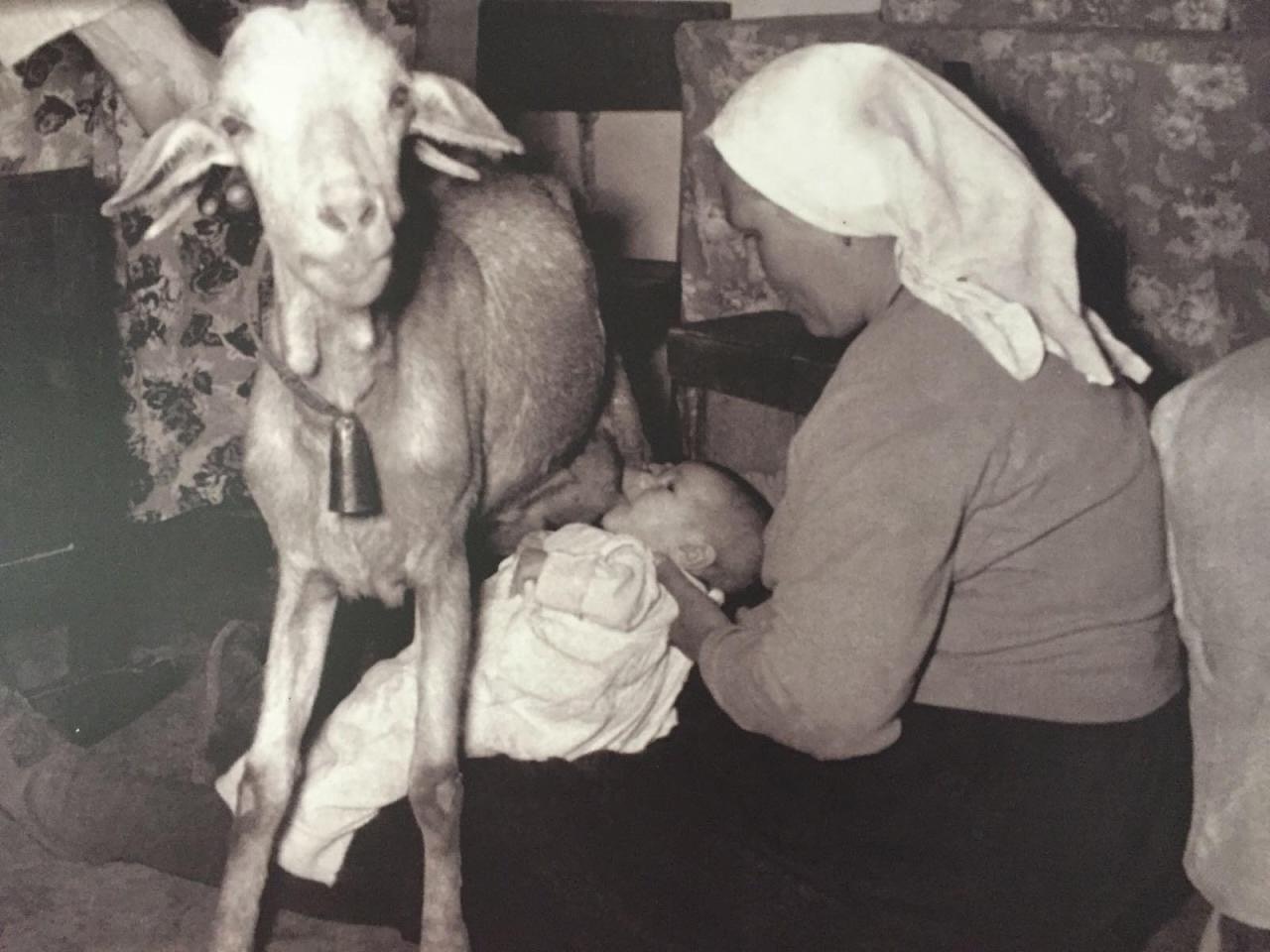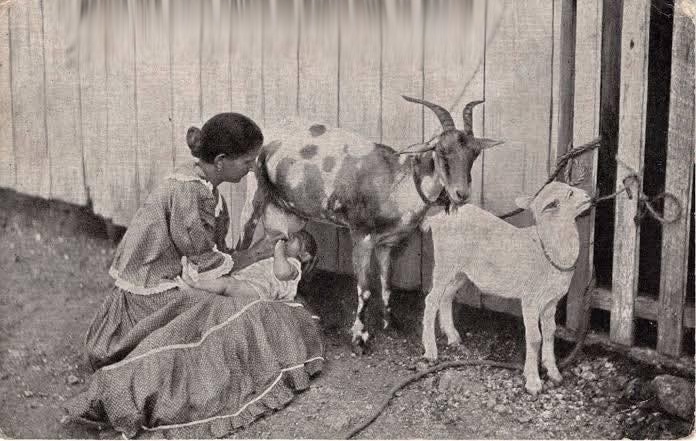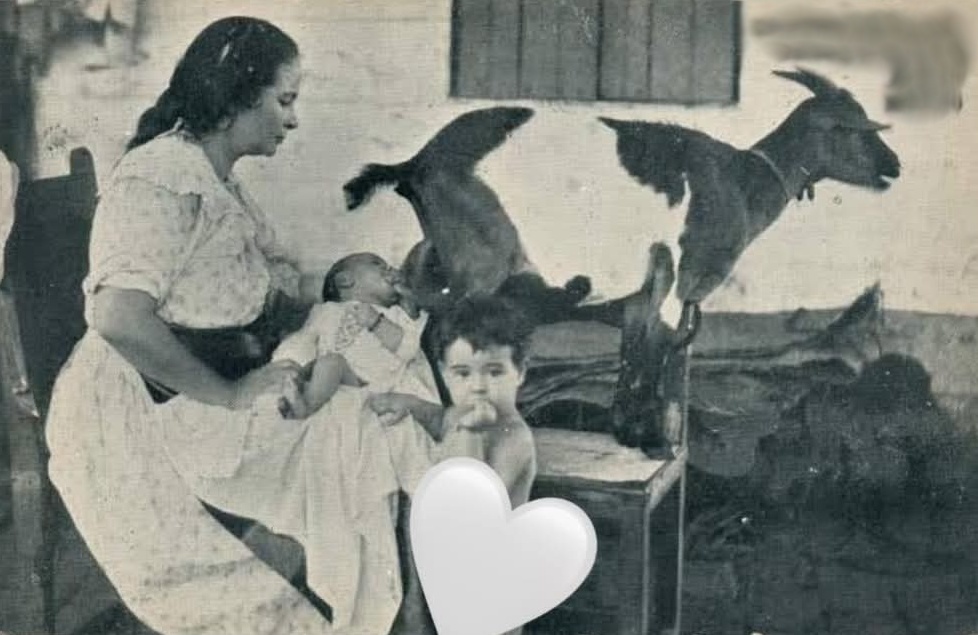From Goat’s Milk to Modern Feeding: A Forgotten Chapter in Infant Care
In 1958, a striking scene was captured in El Mojon, Teguise, Lanzarote: a child suckling directly from a goat. While unusual by today’s standards, this moment reflected a long-standing practice in history, where goats often served as wet nurses when a mother could not provide milk or when hiring a human wet nurse was beyond a family’s means.

The tradition had deep roots. As far back as the 16th century, some families chose goats over human wet nurses, believing that goat’s milk was safer and more reliable. At the time, concerns about illness made many reluctant to depend on human wet nursing, and animals were seen as a more trustworthy alternative.
By the 18th century, goat’s milk as a substitute for human milk gained even greater popularity, particularly in regions where employing a wet nurse was costly. Medical writers of the period, such as Pierre Brouzet, praised the health of children raised on goat’s milk. In early America, physicians like William Potts Dewees recommended goat’s milk over cow’s milk, arguing that it was easier for infants to digest and provided strong nourishment.

Direct feeding from goats was also considered beneficial. Many believed that suckling in this way aided digestion and gave infants a healthier start in life. For families with few resources or limited access to alternatives, goats became an essential part of childcare.
Over time, however, the practice came under scrutiny. As medical knowledge expanded and safer feeding options became available, reliance on goats declined. Still, in the late 19th century, children’s hospitals in Paris briefly revived the method, especially for infants who required special nutritional support.

Though the idea of goats as wet nurses has since faded into history, it remains an intriguing chapter in the evolution of infant care. This story illustrates how cultural beliefs, medical advice, and practical needs shaped the way families across centuries cared for their youngest members.






